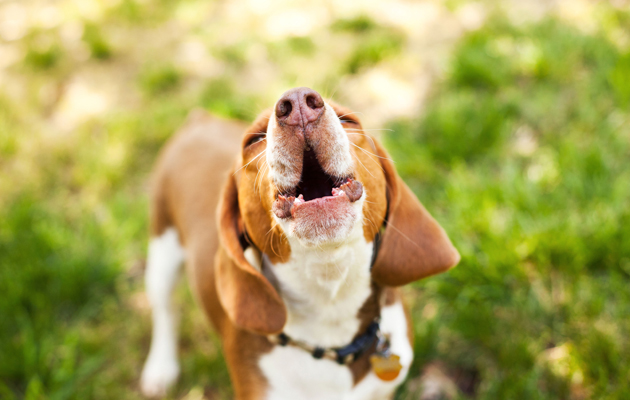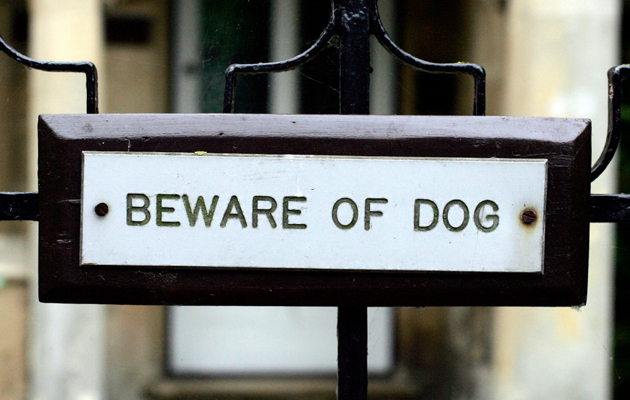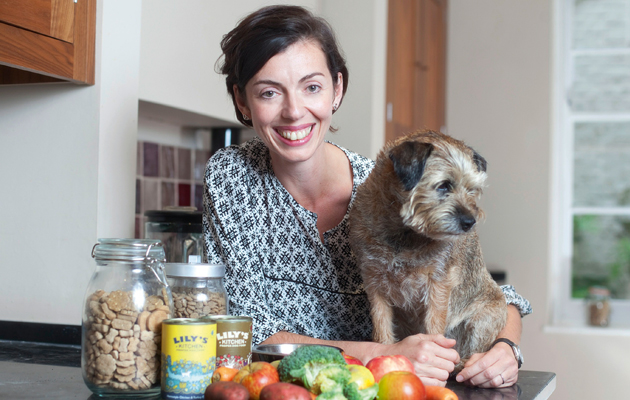How to speak dog
Are you barking up the right tree? You don’t have to be Dr Doolittle to talk to animals: dogs speak a special language that anyone can decode.


Dogs are probably evolution’s greatest triumph. They latched onto us tens of thousands of years ago, at a time when humankind had quite enough on its plate without having to worry about whether Fido had been fed or walked. And yet, with our help, they thrived, and continue to do so. A quarter of all British households are home to a dog, with the figure rising all the time.
How did dogs manage to persuade us to take them into our homes and our hearts? Because they’re brilliant communicators. Dogs have an extraordinary repertoire of social cues—the canine equivalents of holding out your hand to someone when you meet them or fluttering your eyelashes at a handsome stranger.
These are designed to provoke particular reactions and many work a treat. Who, even on the coldest, wettest morning, could say no to a dog that appears carrying its lead cutely in its mouth? Other signals, however, are less obvious, and getting acquainted with them might be the best thing you ever do for your pet.
‘Learning what your dog is actually saying can improve your relationship without a shadow of a doubt,’ says Carolyn Menteith, a Kennel Club-accredited canine behaviourist and instructor and author of its new Puppy Socialisation Plan (www.thepuppyplan.com). ‘It’s only when you really understand what they’re trying to tell you that you get that special Lassie magic.’
She also stresses that becoming more fluent in dogs’ secret language can put a stop to difficult behaviour before it takes hold. The problem, she continues, is that so much gets lost in translation. ‘We’re a very vocal species. Dogs communicate just as clearly as us, but they do it through body language—and we’re not very good at reading that.’
Retracted lips, for example, may look like a smile to us, but they’re actually a sign of nervousness. If your pet really is pleased to see you, as Japanese researchers armed with high-speed cameras discovered in 2013, it will do a Roger Moore and raise its left eyebrow ever so slightly. Likewise, we think of a wagging tail as being a positive thing, but if it’s held high and wagged with a rapid stroke, it can mean a dog is spoiling for a fight.
Posture can offer more clues. If your dog is stretched out on the floor next to you and you’re not sure whether it’s happily resting or expecting attention, look at the position of its front legs. If they’re lying to one side, it’s resting. If they’re straight in front of its body, however, it’s alert and ready to go. This isn’t a piece of whimsy on the dog’s part: keeping the legs in this position makes it quicker and easier for it to leap to its feet and go bounding after you.
Exquisite houses, the beauty of Nature, and how to get the most from your life, straight to your inbox.
In fact, all dogs’ social cues make sense when you think about them properly and most are rooted in the wild. When your dog mystifyingly insists on circling a spot before it lies down for a nap, it’s actually nodding to something clever that its ancestors did. Forever on the lookout, they would trample a patch of long grass to create a safe, hidden place to sleep. In an age of luxury wicker beds, this is clearly surplus to requirements, but you know what they say about old dogs and new tricks.
Ear movements are another ancient form of communication and one of the most telling. If each of your dog’s ears is doing something different, for example, it’s a sign that they’re confused and unsure how to react to a new situation or an unfamiliar face.
All of these little twitches and turns are particularly revealing in breeds that have the most in common with wolves: think of collies, whose ears swivel like satellites when they’re out in the field. Conversely, dogs that were originally bred for fighting, such as bull terriers, have far less expressive ears, because they learned early on that it was safer to keep them out of the way.
As a species, dogs have developed eyes that are acutely sensitive to movement—and tail wags are their version of semaphore. This explains why so many tails have distinctive markings or fluffy tips: it all helps to make them more visible.
You can work out roughly what a tail wag means by looking at two main elements: the speed of the wag, which shows how excited the dog is, and the sweep of its tail, which points to whether its emotional state is positive or negative. As a dog becomes more and more alert, it will hold its tail higher. Put it all together and you can see how a rapid, broad tail wag at hip level would translate as a friendly hello.
Once you have a better idea of what your dog is trying to tell you, might the next step be to talk back to them—or even share a joke? It sounds, well, barking mad, but some scientists believe it can be done.
Back in the 1950s, Nobel Prize-winning ethologist Konrad Lorenz suggested that dogs had their own version of laughter, a particular type of panting most often observed when an animal was goofing around with their owner. When Stanley Coren, psychologist and author of Do Dogs Dream?, read Lorenz’s book Man Meets Dog, he decided to find out whether a human could join in the fun.
By studying his own dogs’ reactions, he worked out that their ‘laughter’ had a distinctive, almost silent hhuh-hhah-hhuh-hhah sound. He set about replicating it in their presence and, amazingly, it seemed to work. ‘When I make these sounds, my dogs sit up and wag their tails as they approach me from across the room,’ Mr Coren reports gleefully.
How to decode woof-speak Do different-sounding barks mean different things? Experts disagree. This is what four of the commonest are generally thought to signify:
- Sounds like Rapid bursts of two to four barks, with pauses between them Means ‘Quick, come and look at this’
- Sounds like A few short, sharp barks at a medium to high pitch Means ‘Hello! Good to see you’
- Sounds like A string of single barks with dramatic pauses between Means ‘Is anyone there? I’m lonely’
- Sounds like A stuttering harr-ruff Means ‘Time to play!’
Right-pawed or left-pawed? We’re all either right-handed or left-handed and it turns out the same is largely true of dogs. Many consistently ‘lead’ with either their front-left paw or the front-right one when running or reaching for a toy. ‘Pawedness’ is a relatively new concept, but trainers report that dogs with a strong preference for one side make better assistance and sniffer dogs, as they’re less likely to have noise phobias.

Top 15 naughtiest dogs in Britain
We reveal the winner and runners up of our competition: Britain’s Naughtiest Dog in association with Lily’s Kitchen.

How to make a real dog's dinner
Show your dog how much you love him by cooking his supper from scratch.
Emma Hughes lives in London and has spent the past 15 years writing for publications including the Guardian, the Telegraph, the Evening Standard, Waitrose Food, British Vogue and Condé Nast Traveller. Currently Country Life's Acting Assistant Features Editor and its London Life restaurant columnist, if she isn't tapping away at a keyboard she's probably taking something out of the oven (or eating it).
